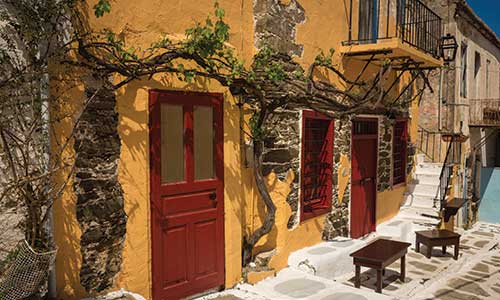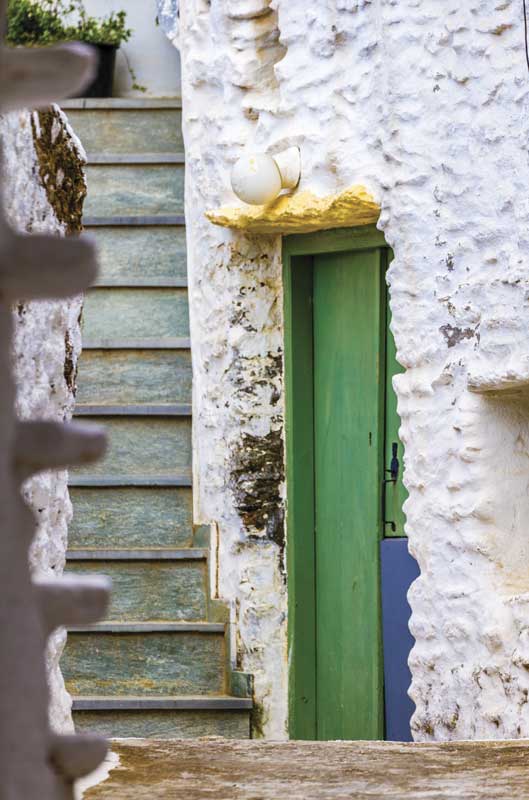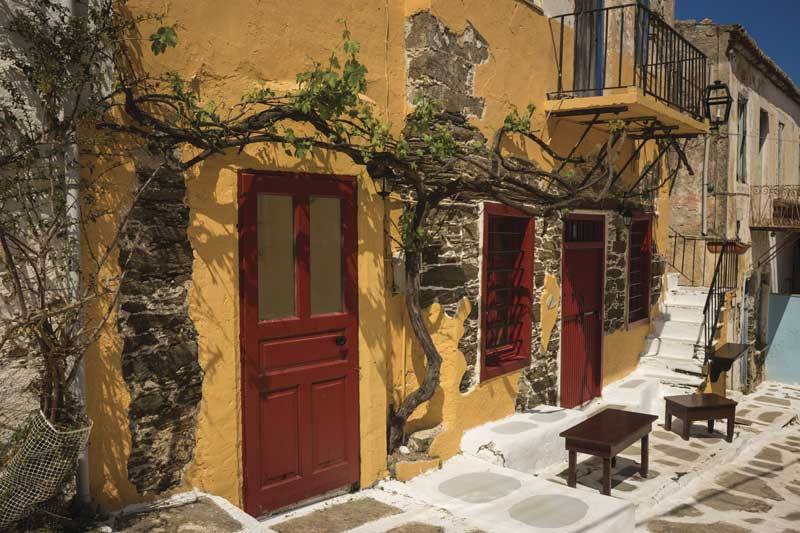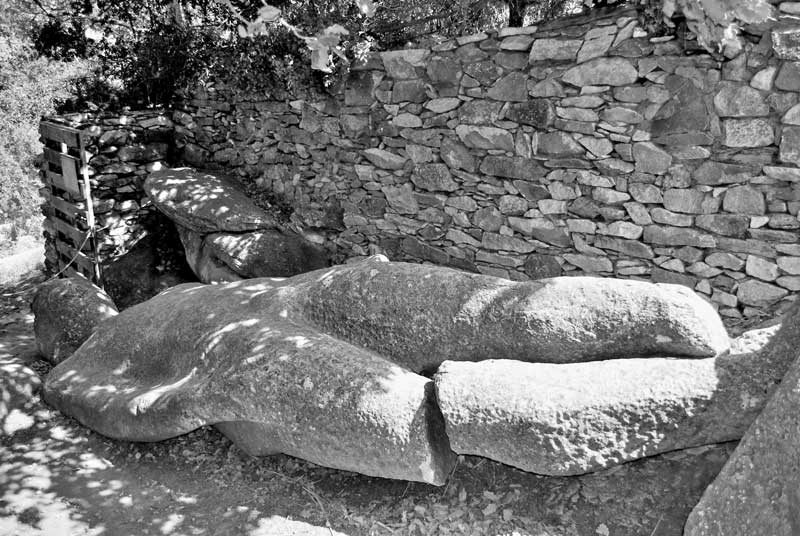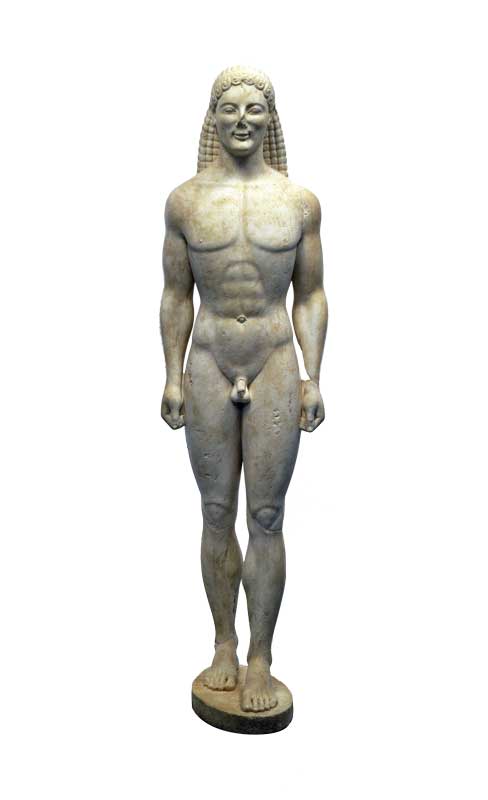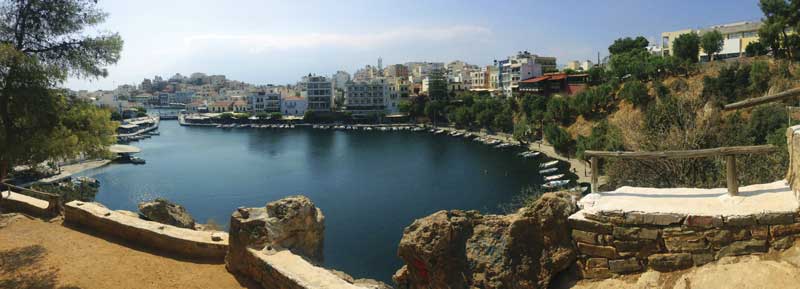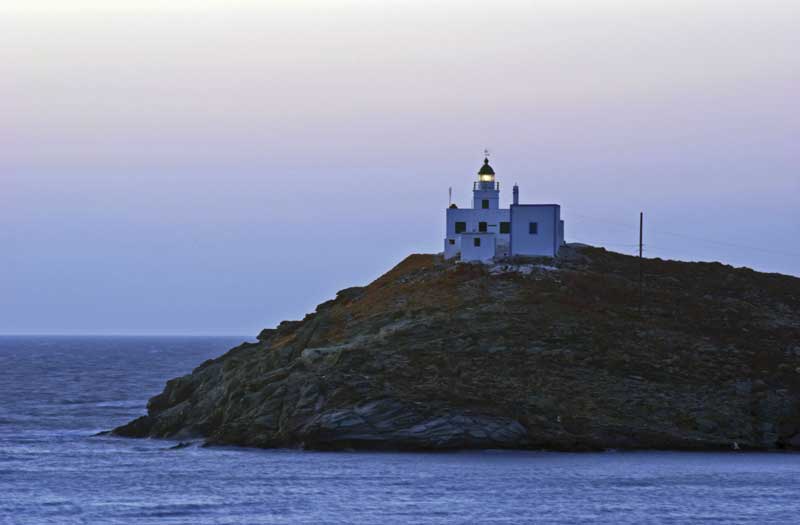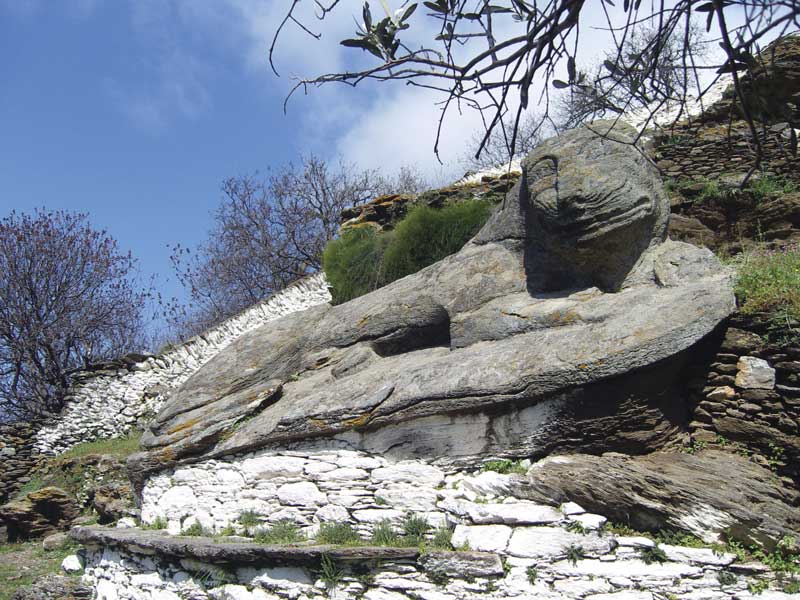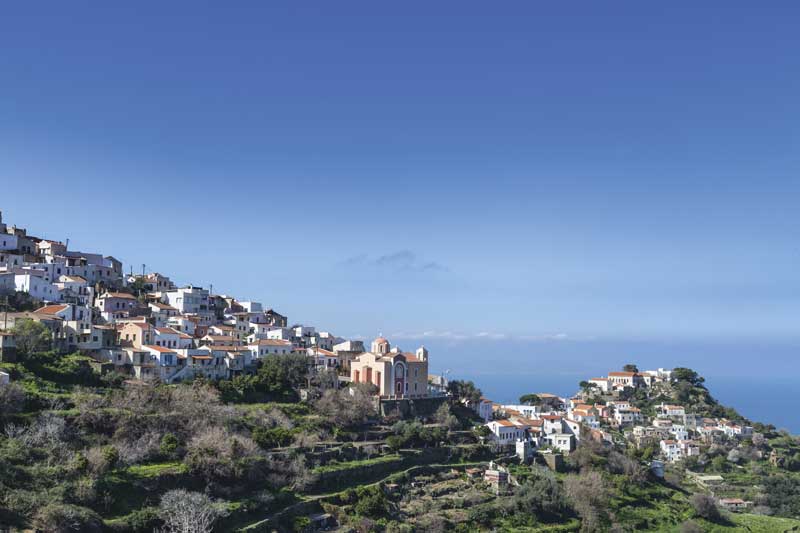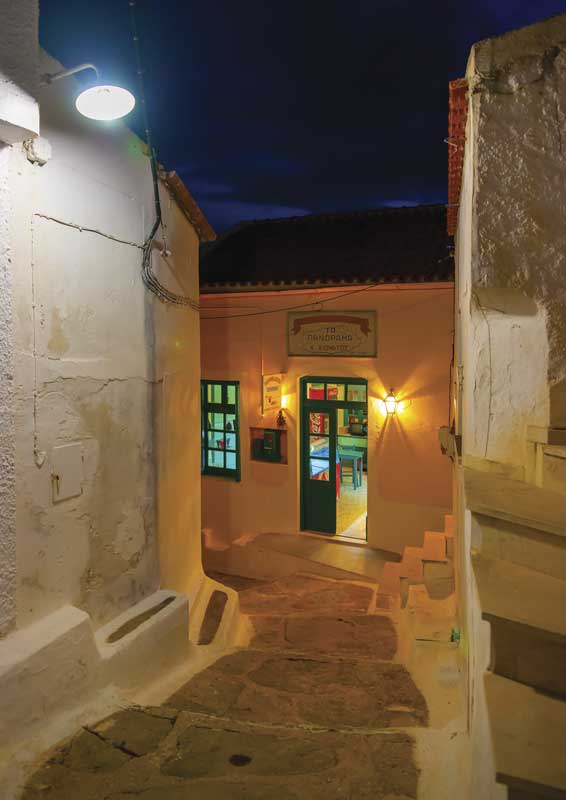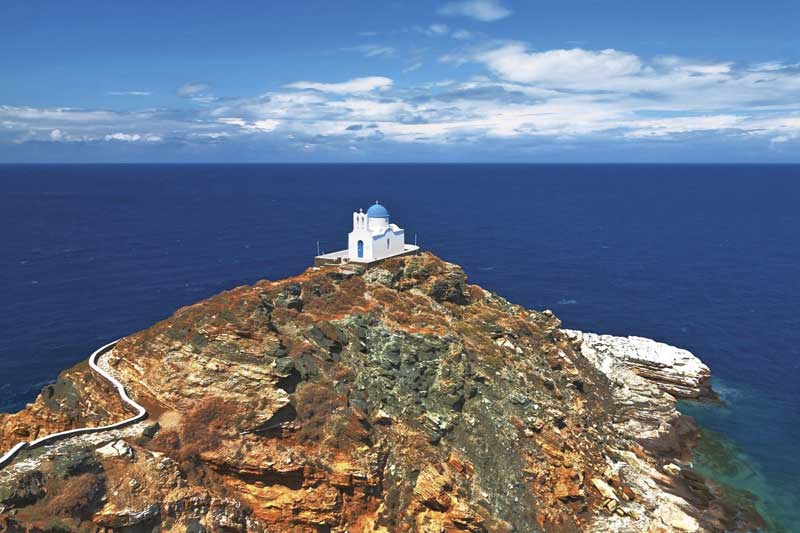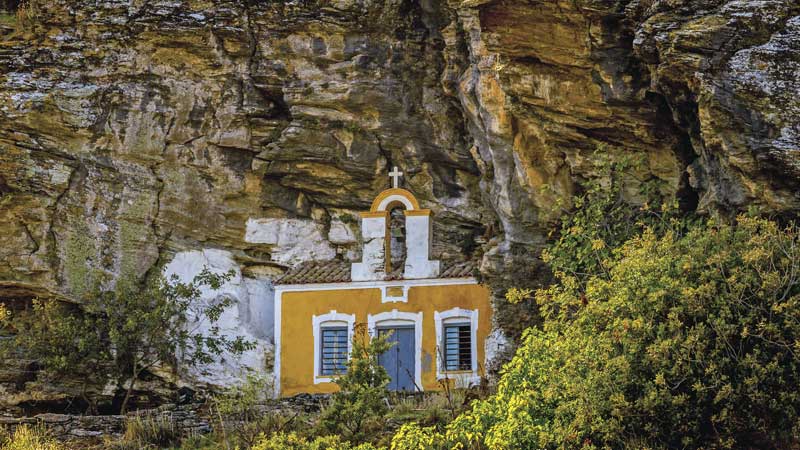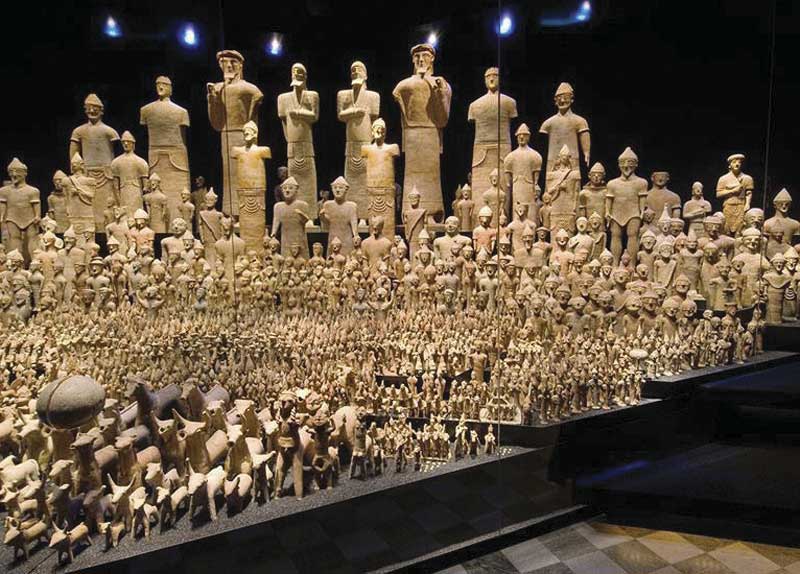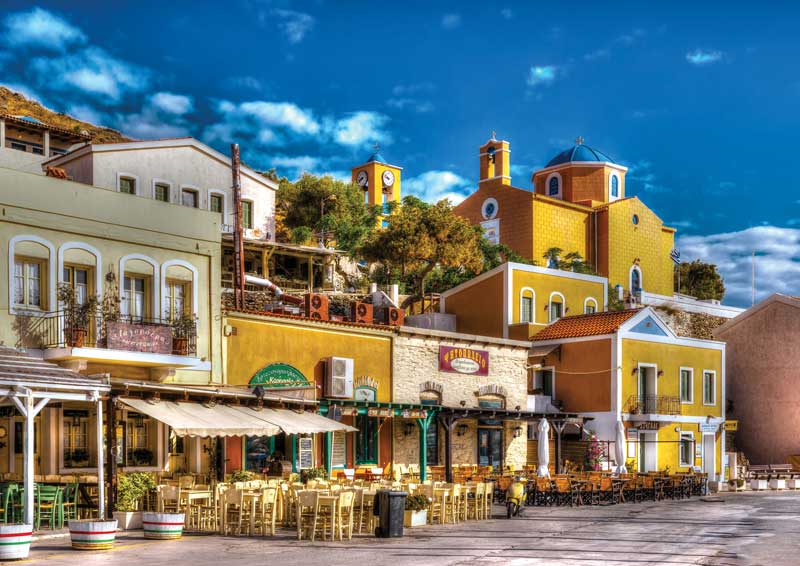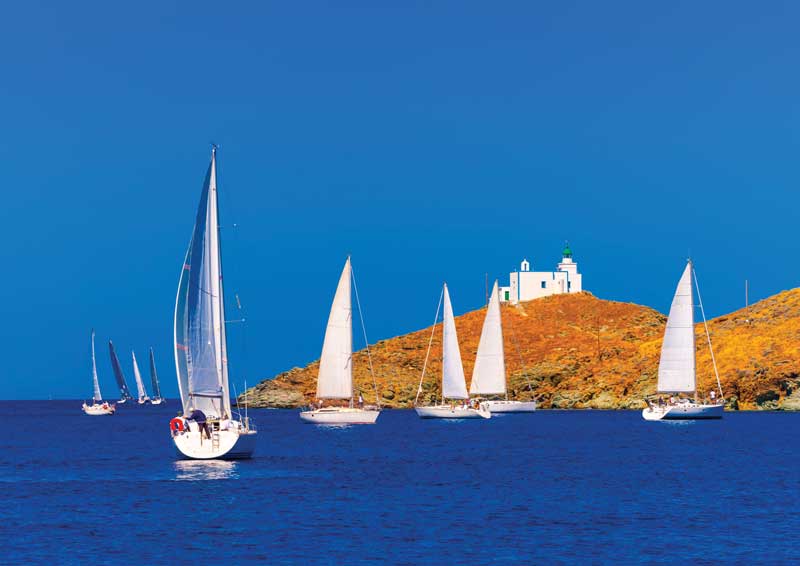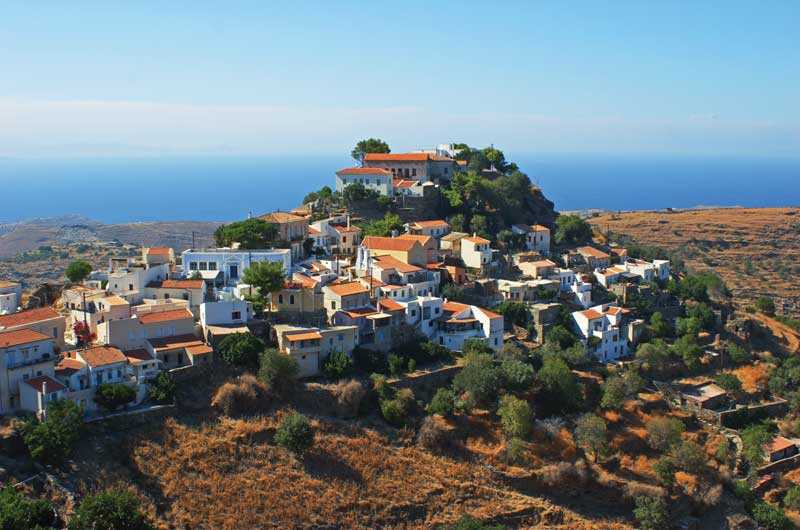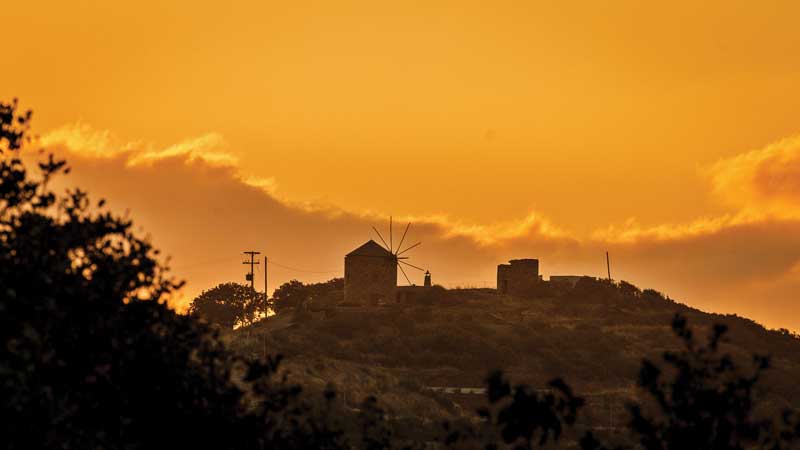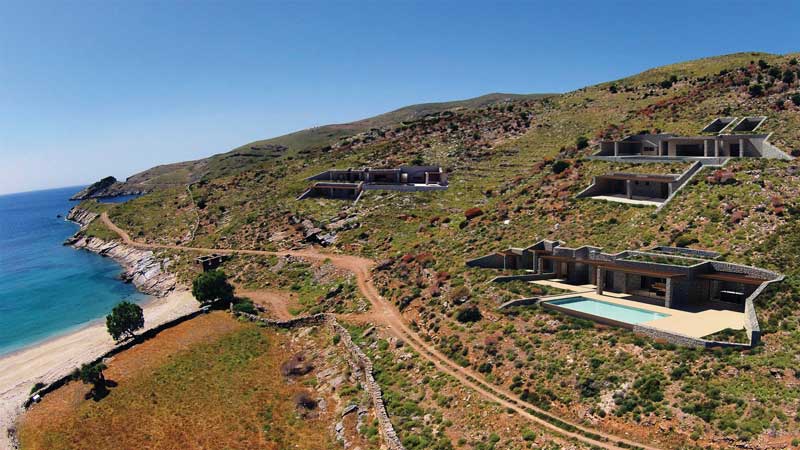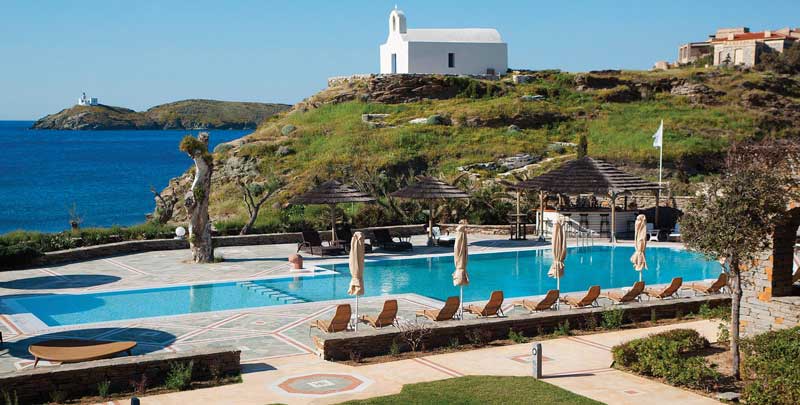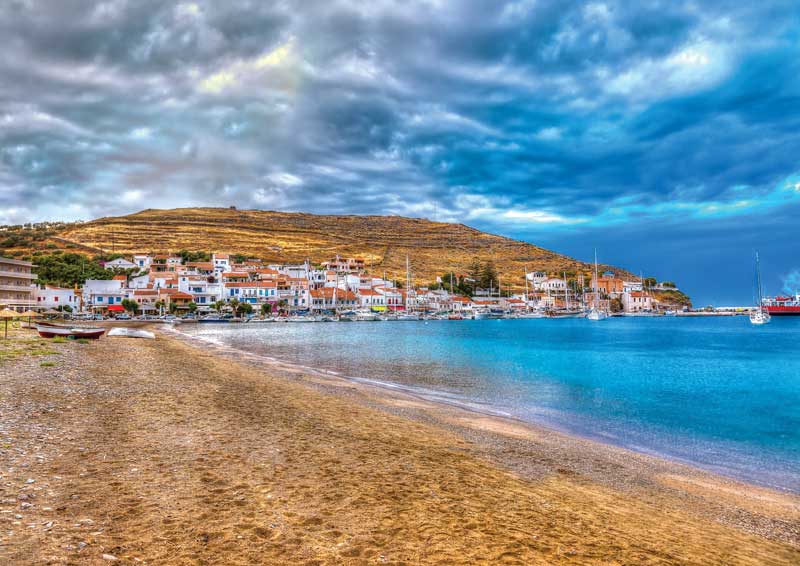The Best-Kept Secret of the Cyclades Islands
Kea was named after the hero Keos, son of Apollo. This delightful island is referred to as one of the areas where Greek civilization began to develop. The island’s former name is Hydroussa, and Greek mythology describes it as a land blessed with large reserves of water. Nymphs inhabited the forests; water fairies lived in many springs, but they all fled in fear of a terrible lion that appeared in the woods. Because of this, Sirius the star—mad with anger—transformed the island into an arid landscape, just like the rest of the Cyclades. Aristaeus of Thessaly, a demigod son of Apollo as well, convinced Sirius to mitigate the punishment; however, the memory of it remains when the Meltemi winds blow strong and scatter the clouds, allowing the star to shine brighter than the others. According to some of the stories, it was Aristaeus who introduced agriculture, stockbreeding, beekeeping, and olive cultivation.
Archeological research has followed human presence on the island since prehistoric times; an example of this is the archeological vestiges in the Kefalas excavations, located at the northeast coast of the island; it was founded during the Neolithic period, around the end of the fourth millennium. Similarly, the population of Agia Irini, north of the Agios Nikolaos port, can be traced to the third millennium BC, and it peaked during the last Bronze Age (1600-1100) because it was a prominent cultural and commercial hub during the Minoan and Mycenaean periods. Here, as well as in other Cyclades islands, the large reserves of lead and copper contributed to economic prosperity. Agia Irini’s archeological remains reflect a fortification system; the most important are the temple and the mansion of the master. A fabulous statue, the Getty Kouros (520 BC), was unearthed where the ancient city of Korissos used to be, and where Korissia port currently is. The statue is exhibited at the National Archaeological Museum of Athens. Researcher and Professor John L. Caskey from the University of Cincinnati, has led studies of the area and its culture since 1960.
Because of its government and social development, Aristotle included Kea’s political system in his work Keion Politeia. The island was involved in a series of conflicts between the Byzantine Empire, the Ottoman Turks and the Venetians; then they were ruled by France, Russia and then Britain until it was finally incorporated to the Greek state after the war of independence in 1821.
The ancient city of Kazrea is another archeological site at the southeast of the island—extremely important in the Byzantine period. The Lion of Kea is a granite statue from the 11th century BC, and it is a distinguished touristic attraction. The Lighthouse at the port of Korissia is a white-stone fortress built next to the Church of Saint Nikolaos; it was built during the 17th century on the remains of the Temple of Poseidon. It was also the first in the Cyclades islands, and the second most ancient in Greece. The tower is 8 meters tall and the height of focal plane is 32 meters.
Personalities
Statesman Aristides was from Kea; he was one of the greatest thinkers in ancient times. Simonides of Ceos (556 – 468 BC) and his nephew Bacchylides (565 – 430 BC) were two of the most prestigious lyrical poets of ancient Greece.
The book The Praise Singer (1978), by British writer Mary Renault, is narrated by Simonides of Ceos.
Exploring Kea
The touristic village Voukari has a port for recreational watercrafts. Because it is a naturally protected bay, high waves aren’t common. There are many hotels, restaurants and the liveliest nightlife in Kea. You can also find the ruins of a Minoan city and palaces at the Agios Nikolaos bay, and the foundations of the walls of the city, some houses with storages and drain. A visit to the Monastery of Astrianes, northeast of the island, is recommended. The Kastro neighborhood in Ioulis is named after a Venetian castle from 1210, where you can enjoy the splendid views from its high walls. Additionally, it’s worth visiting some of the neoclassical buildings to appreciate their architecture, like Kea’s town hall in the main square, or the church of the patron of the island, Saint Haralambos, who is celebrated on February 10.
Archeological Museum: It is open to the public from Tuesday to Saturday from 08:00 to 15:00 hrs. Exhibitions include everyday use objects, cults, funerary traditions, architectonic pieces, inscriptions, sculptures, votive reliefs, urns, coins, Cycladic figurines from the prehistoric Agia Irini, chunks of the pediment of the temple of Athena in Karthaia, and the headless statue of Victoria. There are also clay statues that represent either goddesses or priestesses: the Kore or Korai.
Folklore Museum: Located within a stone building from 1845, it is dedicated to preserve and improve cultural heritage. Inside, there is a variety of folkloric exhibitions of farming tools, household goods and decorations, ancient clothing from the beginning of the 19th century, and photographs. Outside, surrounded by orange trees, there is a stone amphitheater that hosts cultural events and festivities during the summer.
There are 11 grain windmills—typical examples of the local architecture—that nowadays stand mostly abandoned, and some of them have been turned into touristic lodgings.
The door to the Aegean Sea
Kea is approximately an hour away from the Port of Piraeus—of great significance in the Mediterranean Sea—, which is 10 km away from Athens. Although many ships that travel to the islands make their first stop in the Port of Korissia (where the Aegean Sea begins), and it links the Cyclades to the mainland, it is a mystery why it remains essentially unknown to tourists. Perhaps this is the most appealing characteristic of the island, and, considering the absolute safety it provides, you can easily adapt to the lifestyle of the local islanders.
The ones who really enjoy Kea’s serenity and traditionalism are Athenian families, who usually spend weekends on the island. Some of them have built luxury villas for this purpose. Kea still preserves many unexplored areas: beaches and remote coves—true natural paradises—but also mountains, green prairies, olive groves, vineyards and natural springs.
Paths of several km long will guide you to different landscapes: forests, hills, and ruins of ancient cities. These routes interconnect the island’s four main cities: Ioulis, Karthaia, Korissia and Pisses. Ioulis, the current capital, was built on the ruins of its predecessor, and it is a tangle of narrow streets that can suddenly turn into stairs, making automobile circulation impossible—a peculiarity in the context of the contemporary world. Building new houses within the capital is forbidden; therefore the ancient buildings are periodically restored.
Kea is the destination of choice for sailing aficionados; the island harbors many coves to visit during romantic evenings aboard a sailboat or private yacht, and there are many virgin beaches to discover during the day.
Kea is famous for having the best restaurants in Greece, and on the way to the port you can find shops with touristic souvenirs, coffee shops, supermarkets, hotels and apartments for rent.
Beaches for Everyone
Liparo beach is 19 km southeast of Koundurus, faraway and crystalline, it is a true paradise. Kampi offers a relaxing experience; while Pisses and Otzias are recommended for windsurf. Korissia is lovely and isolated. The most popular beach is Gialiskari, located at the Agios Nikolaos bay, rimmed by a dense clump of eucalyptus trees. And don’t forget Orcos beach, at the bay of the same name, or visit the town of Otzias with the available houses around the bay, perfect for leisure, swimming or enjoying a typical dish. Mylopotamos provides an interesting panorama of watermills; Koundurus has windmills and a small touristic town.
Lastly, a relevant fact: the southeast area of Kea is protected by Natura 2000, which is a network of protected natural environments all over the European Union. The program promotes conservancy and sustainable development; in Kea, they protect the local flora that includes unusual species like the royal oak—the remaining few in the Aegean Sea—, orchids, endemic mushrooms, lichens, shrubs and medicinal herbs.
Lisa Sotilis, (sculptor, painter, jewel designer, and art collector) a passionate promoter of Kea, plans to develop a Kea-based International Cultural Center that features the most ancient civilizations of the world.
She shared a few tips:
“A very typical restaurant in terms of local food that I can recommend upon arrival by ship to the Port of Korissia, is Aristos. It offers the famous macaroni and lobster, and the rest of the traditional Kea dishes with goat cheese and special sausages. Ten minutes away, in the Vourkari port, the most renowned restaurant stands high on the rocks, with an incredible panoramic view: the Ennea Kores (Nine Daughters). There is a fancy tavern of exceptional quality where you can have spaghetti with lobster and shrimp fished right in front of my property; vegetable salads, goat cheese, sausages and bread are the best. In terms of accommodation in Kea, the Porto Kea Suites in Korissia—an exquisite place to enjoy the Mediterranean weather and culture—is the best choice.
Aristos Restaurant: https://goo.gl/maps/VrMZ5fVtGRF2
Ennea Kores (Nueve Hijas) Restaurant: https://goo.gl/maps/CSahC9uRsT52
www.portokea-suites.com
Text: Maruchy Behmaras ± Photo: © Ramonespelt / © PULPITIS / ETHNOS / ad / © Haris Vythoulkas / ROYAL CHRONICLES / © JOOP KLEUSKENS / JAS.JPG / © Asteri77 / © Songallery / © Mark Higgins / © FRANCOCOGOLI / SEFEA LE / © GIAN MARCO VALENTE / ADSF © ASTERI77 / © COLACAT2006 / © RAINPREL / ARGOLAS / SDF / © ANDREI / STANCU / © Brento / ASHX / MAID / © ZWAWOL / © SERGEIALYOSHIN / © PAUL PHILLIPS / © IVAN JELISAVCIC / SANAT /

